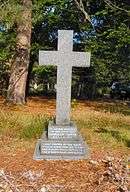William Henry Solomon
Sir William Henry Solomon KCSI KCMG PC KC (1852-1930) was a judge of the Appellate Division from 1910 to 1929 and Chief Justice of South Africa from 1927 to 1929.[1]
Sir William Henry Solomon KCSI KCMG PC KC | |
|---|---|
| Chief Justice of South Africa | |
| In office 1927–1929 | |
| Preceded by | James Rose Innes |
| Succeeded by | Jacob de Villiers |
| Judge of the Appellate Division | |
| In office 1910–1929 | |
| Judge of the Griqualand West High Court | |
| In office 1900–1910 | |
| Personal details | |
| Born | 1852 Philippolis, Orange Free State |
| Died | 1930 |
| Resting place | Brookwood Cemetery |
| Nationality | South African |
| Alma mater | Lovedale Cape University Peterhouse, Cambridge |
| Profession | Barrister |
Early life and family
Born in 1852, he was the son of the missionary Edward Solomon and his wife Jessie Matthews. He was also the nephew of the great liberal politician and founder of the Cape Argus, Saul Solomon.
Career

From the age of 35, he served for 10 years as a judge for the Griqualand West supreme court.
After the end of the Second Boer War, the government of the newly created British Colony of Transvaal established a Supreme Court of Transvaal in April 1902. The governor, Lord Milner, appointed Wessels as one of three puisne judges, with Sir James Rose Innes as Chief Justice. Solomon was transferred to this Supreme Court too, and he was appointed to the 1st Appeal Court for the new Union of South Africa when it was formed in 1910.
He was appointed Chief Justice of South Africa in 1927. At the end of his career he also sat on the UK Privy Council.[2]
He is buried in the Solomon Family Plot in Brookwood Cemetery.
References
- Zimmermann, Reinhard; Visser, Daniel (1996). Southern Cross: Civil Law and Common Law in South Africa. Cape Town: Juta. pp. 121–122.
- "The Transvaal". The Times (36744). London. 17 April 1902. p. 5.